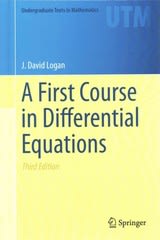Question
Confused about this portion of the unit 2 Sample T-interval and T-test 1. A man who moves to a new city sees that there
Confused about this portion of the unit "2 Sample T-interval and T-test"
1. A man who moves to a new city sees that there are two routes he could take to work. A neighbor who has lived there a long time tells him Route A will average faster than Route B. The man decides to experiment. Each day he flips a coin to determine which way to go, driving each route 20 days. He finds that Route A takes an average of 40 minutes, with a standard deviation of 3 minutes, and Route B takes an average of 43 minutes, with a standard deviation of 2 minutes. Histograms of travel times for the routes are roughly symmetric and show no outliers.
a) Is there evidence that Route A is faster than Route B? Complete a hypothesis test to determine if the neighbor is correct with his claim.
b) Create and interpret a 95% confidence interval for the difference in average commuting time for the two routes.
c) Should the man believe the old-timer's claim that he can save an average of 5 minutes a day by always driving Route A? Explain. (*Hint: see if 5 is in your interval to see if it is believable)
2. Researchers investigated how the size of a bowl affects how much ice cream tend to scoop when serving themselves. At an "ice cream social," people were randomly given either a 17 oz or a 34 oz bowl (both large enough that they would not be filled to capacity). They were then invited to scoop as much ice cream as they liked. Did the bowl size change the selected portion size?
Large Bowl N:22, Y: 6.58 oz, S: 2.91 oz
Small Bowl N:26, Y: 5.07 oz, S: 1.84 oz
a) Is there evidence that the bowl size changes the portion size of ice cream at the social? Complete a hypothesis test to determine this.
b) Create and interpret a 95% confidence interval for how much of a difference there is in the portion sizes. Which size has more ice cream portioned?
3. In June 2007, Consumer Reports examined top-loading and front-loading washing machines, testing samples of several different brands of each type. One of the variables the article reported on was "cycle time," the number of minutes it took each machine to wash a load of clothes. Among the machines rated good to excellent, the 98% confidence interval for the difference in mean cycle time (top - front) is (-40, -22).
a) Explain what this interval means about the two types of washers.
Explain why you think each of the following statements is true or false:
b) 98% of top loaders are 22 to 40 minutes faster than front loaders.
c) If I choose the laundromat's top loader, there's a 98% chance that my clothes will be done faster than if I had chosen the front loader.
d) If I tried more samples of both kinds of washing machines, in about 98% of theses samples I'd expect the top loaders to be an average of 22 to 40 minutes faster.
e) If I tried more samples, I'd expect about 98% of the resulting confidence intervals to include the true difference in mean cycle time for the two types of washing machines.
f) I am 98% confident that top loaders wash clothes an average of 22 to 40 minutes faster than front-loaders.
Step by Step Solution
There are 3 Steps involved in it
Step: 1

Get Instant Access to Expert-Tailored Solutions
See step-by-step solutions with expert insights and AI powered tools for academic success
Step: 2

Step: 3

Ace Your Homework with AI
Get the answers you need in no time with our AI-driven, step-by-step assistance
Get Started


